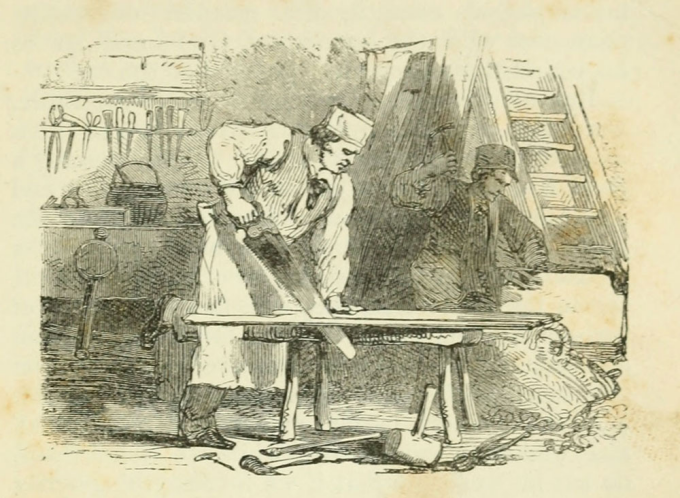Long long ago, people used to think about what people needed, and make that thing, and sell them. people needed a table, so a carpenter made a table, and sold the table to the person. Then the person would need another table a few years later, and another table would be made. Then carpenters developed better tools, and the process of making tables, clothes, food and everything else became quicker, easier and cheaper, and we made more stuff.

Soon everyone could have not only a shared table, but their own table, and not only that, they could have multiple sets of clothes, not just for when some were being washed, but separate clothes for separate occasions. You could afford your work clothes, and you had separate leisure clothes. Even special clothes to sleep in, and then came ‘formal’ clothes, the suit for weddings and posh events. Eventually we progressed to a situation where you would have an entire wardrobe of clothes, and you picked them based on what mood you were in, or the season.
Then fashion came along and told you that even though you had enough clothes to wear, and clothes for doing X and for doing Y and clothes for Summer, and clothes for Winter, and clothes for the evening and for the afternoon, and for sports, and even for different sports (golfing trousers…) suddenly all of that was going to change because your clothes were UNFASHIONABLE. That meant you had to ditch all your clothes and buy completely new ones.

And once that worked, clever people who had by now long discovered psychology, started to apply the principles of fashion to other things, including the thing that was for many people the second most expensive purchase of their lives : cars.
Suddenly cars were ‘old fashioned’ and despite happily fulfilling the task you bought them for, you wanted a new one. This spread to almost all consumer products, not least TVs, and personal computers. We ended up buying a new laptop, not when the other one died, or got broken, but when a newer model came out that was slightly thinner, slightly lighter, slightly faster (for a while at least).

Now fast forward to a dystopian future where you don’t have a trained psychologist working in marketing, but EVERYONE is the marketing department studied behavioural economics, psychology and neuroscience. A future where most employees in the PR and marketing department are data scientists. A future where the amount of information collected about customers, and their use patterns, and their desires, and dreams, and fantasies and ideals…was all gathered by private companies who would use it, not so much for the improvement of mankind in any way…but to make a product that those people would always buy.
The endgame, the final desire of such a system is to produce a product that has multiple contradictions. It has to be seen as exclusive and premium, and luxury, and yet at the same time be marketed to everybody. It has to have a premium price, despite having no features that any rival product does not already has. It has to appear cool hip and desirable, and the company that makes it portrayed the same way, regardless of how that company behaves behind closed doors.
It doesn’t have to be any good, have any improvements whatsoever over any other version of EXACTLY the same product. It only has to be *seen to be* better, not actually be a better product. And if at all possible it needs some tiny visual indicator, visible to someone nearby, on the same table, or bar, that the person who has the product most definitely has the very expensive new one. Thats all it needs to do. And in this dystopian future, they can sell a product to you that bad, and they can be that blatant about it, because they have totally and utterly weaponized modern science when it comes to manipulating your psyche so that irrationally, you still want it, and you will still buy it, and you will make that company the wealthiest company on the planet.
